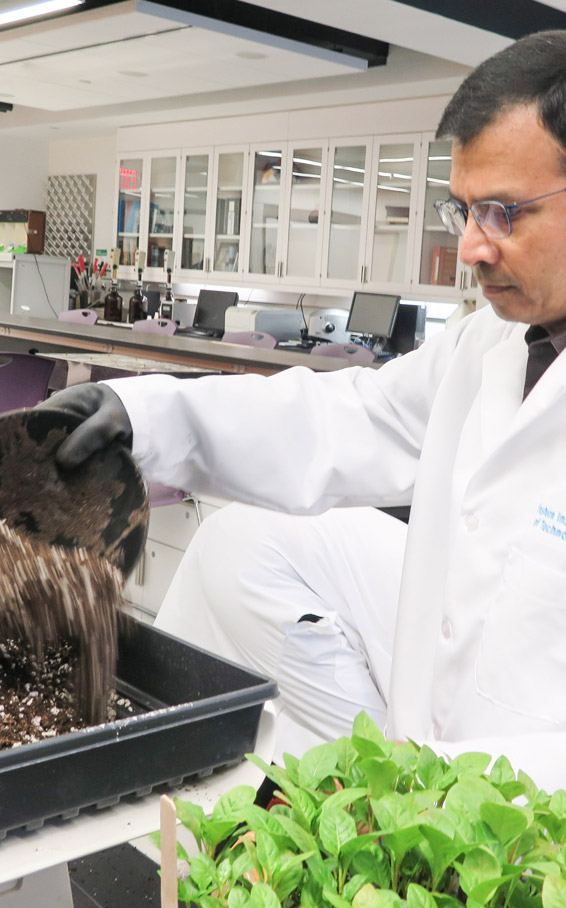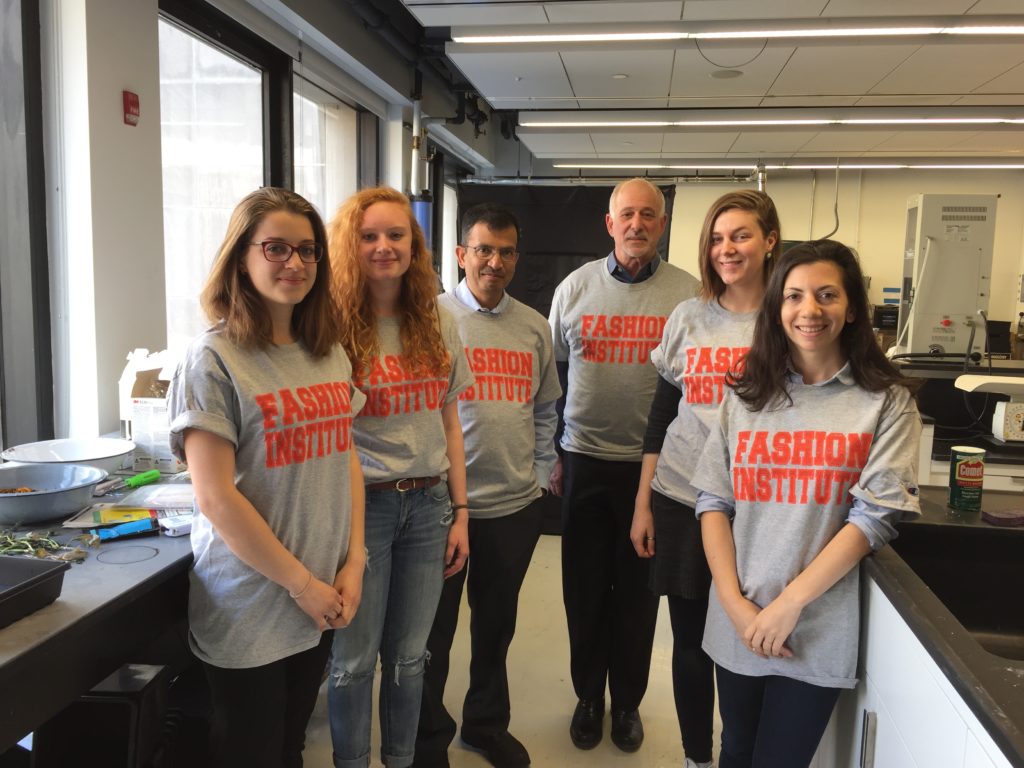More

Purpose/Impact
This project, composed of two studies, addresses a major ecological concern (environmental sustainability), shows potential for adoption and long-term viability (economic sustainability), and educates students (social sustainability).
The first study on natural dyes, focused on two plants that yield natural colorants. Japanese indigo (Polygonum tinctorium) was included because major U.S. textile mills could use it to make denim. Dyers’ coreopsis (Coreopsis tinctoria) was studied because of its popularity with craft dyers, as it provides a variety of colors, including yellow, orange, red, and brown. The indigo and coreopsis plants were grown separately under lights in two unattached grow tents, to avoid light, pathogen, or pest contamination
The second study used cotton compost generated at FIT to cultivate the dye plants to determine whether the benefits of adding composted cotton is significant. The study was conducted in controlled greenhouse environments to determine whether there is a noticeable difference in the germination rate and seedling development, comparing plants grown with 10 percent composted cotton (referred to as “treated”) and the same soil without cotton compost (referred to as “untreated”).
Outcomes/Accomplishments
The final objective of extracting natural colorants from plants to dye cotton fabric was successful. Additionally, results showed that fabric dyed with either coreopsis or indigo from treated soil had a higher color-depth value than that from untreated soil.
The compost project used the 100 pounds of muslin scraps generated weekly by fashion design students for draping, sewing, and patternmaking. This waste typically goes to landfills. For the project, muslin collection bins were placed in classrooms at FIT. Fabric was then shredded and readied for biodegrading. Compost mixtures were started with 50 percent food waste and 50 percent cotton muslin, plus added moisture.
After all of the water, food, and textile waste were added to the composter, they were mixed thoroughly by spinning. The composter was spun every other day to increase available oxygen and maintain aerobic conditions. Finally, the decomposed material was moved to a vermicomposting system containing redworms (Eisenia foetida) for final decomposition and maturation. Upon completion of composting, the finished humus was tested for overall agricultural quality using the US Composting Council’s Test Methods for the Examination of Composting and Compost by an independent certified testing laboratory. The quality of the compost was found to be good in its values of total nitrogen, organic matter, and carbon-to-nitrogen ratio.





